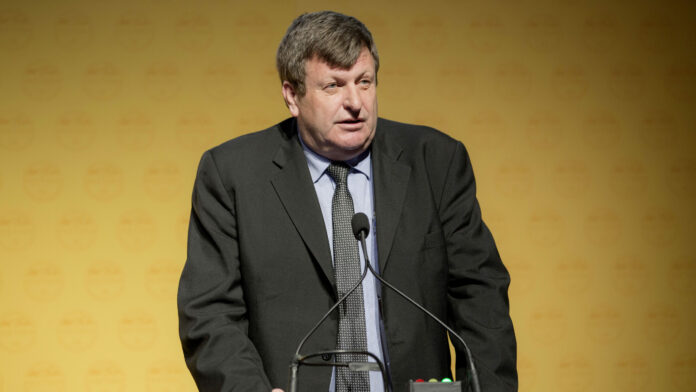
HARMONY Gold’s non-executive directors will be earning their fees this year with one weighty, strategy-defining decision pending. That is whether to build a new copper mine in Australia or stick to its knitting by deepening an existing gold mine in South Africa.
If feasibility studies due at the end of this year check out, the projects could fly simultaneously, at least in theory. In practice, Harmony may be hard-pressed to do both. It reported a ratio of debt to earnings before interest, tax, depreciation and amortisation (ebitda) of 0.6 as of end-December. While that ratio comfortably falls within its debt covenant, the board thought it prudent to pass the interim dividend ahead of a R17bn stay-in-business capital programme for 2023 and 2024.
The Eva copper project was acquired last year for $170m and, based on a study completed by its former owner, Copper Mountain Mining Corp — which Harmony is updating — it will cost another $600m to build. However, the project has a short lead time of two years before production of a metal the world desperately needs. Harmony expects there to be no shortage of financiers — especially given the project’s location in a developed economy.
In the other corner is Gauteng’s Mponeng mine, which Harmony bought from AngloGold in 2020 for $200m in cash excluding add-ons. Mponeng is a treasure but it operates at 3.7km, making it the world’s deepest gold mine. The Mponeng “Deeps” project therefore represents a technical frontier and an economic stretch. There are also sovereign risks with which local mining industry toils daily, including electricity inflation and safety.
Harmony CEO Peter Steenkamp acknowledges that increased Eskom tariffs unavoidably lower “cut-off ratios” — the level at which gold reserves can be economically mined. “We can’t forever absorb them,” he says of tariff hikes. “But we have the lashes on our backs dealing in South Africa.”
Officially, Steenkamp is saying the company is keeping an open mind on both projects, especially if a capital-light approach to Mponeng Deeps can be found, which may involve building modular declines rather than extending AngloGold’s shaft. But if it’s a question of choosing one project over the other to protect the balance sheet and resume dividends, Eva looks a clear winner.
It also represents the first of a bold diversification strategy for Harmony. The company has dabbled in international strategy rather than embracing it. Its two Papua New Guinea assets, Wafi-Golpu and Hidden Valley, were added by previous managements. Now, however, offshore expansion is an existential imperative. “There is nothing more to mine or grow here,” says Steenkamp. Speaking at the firm’s interim results this month he likened Harmony’s strategy to rugby tactics: “You have to take the gap in front of you.”
That may mean more copper acquisitions in the future, especially as unmined gold deposits nearly all occur with the metal, Steenkamp noted. Pressed for details, he said base metal targets interested him; in fact, any precious metal, though he did not want “to start a rumour”. There’s a long-held “dream” of buying assets in Africa. Coal is out of the question, shareholders may be relieved to know.
Stick to knitting
Analysts at Bank of America question the thinking, however.
Gold companies tend to trade at a premium to base metal companies, which means that a pivot away from gold equals a lower multiple. While there are “large deficits for copper” in the long term “we are reluctant to recommend a company that lacks a sustainable track record of value creation”. It’s also worth remembering just how powerful Harmony’s traditional “leverage to the gold price” really is.
According to Bank of America estimates, a $200 per ounce move in gold drives a R5bn change in Harmony’s ebitda at R18.30 to the dollar.
Even with a successfully developed copper portfolio, Harmony’s poor track record on fatalities “could rule it out as an investment choice for many funds with an ESG focus”, they say.
Georges Lequime, a portfolio manager at the UK fund Amati Portfolio Investors, thinks Harmony’s best route might be the nuclear option of creating an Australia-listed copper project spin-off. That would sort investors by preference and avoid the South African discount playing havoc with the fundamentals of the copper market. “Only a few gold companies get a gold premium these days. That’s not Harmony, which clearly trades at a discount to its NAV.”
In the meantime, it would be better to deepen Mponeng and “stick to what you do best”, Lequime says.
This story was first published in the Financial Mail.








